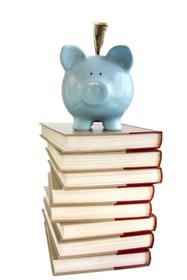Top Rankings
Red Lake Falls Public School District ranks among the top 20% of public school district in Minnesota for:
Category
Attribute
Math Proficiency
Highest math proficiency (Top 20%)
Student Attention
Lowest student-teacher ratio (Top 1%)
For the 2025-26 school year, there is 1 public high school serving 176 students in Red Lake Falls Public School District. This district's average high testing ranking is 9/10, which is in the top 20% of public high schools in Minnesota.
Public High School in Red Lake Falls Public School District have an average math proficiency score of 47% (versus the Minnesota public high school average of 36%), and reading proficiency score of 52% (versus the 51% statewide average).
Public High School in Red Lake Falls Public School District have a Graduation Rate of 80%, which is less than the Minnesota average of 83%.
The school with highest graduation rate is Lafayette Secondary, with ≥80% graduation rate. Read more about public school graduation rate statistics in Minnesota or national school graduation rate statistics.
Minority enrollment is 15% of the student body (majority Hispanic), which is less than the Minnesota public high school average of 37% (majority Hispanic and Black).
Overview
This School District
This State (MN)
# Schools
2 Schools
1,172 Schools
# Students
389 Students
309,925 Students
# Teachers
37 Teachers
18,770 Teachers
Student-Teacher Ratio
11:1
11:1
Student By Grade
District Rank
Red Lake Falls Public School District, which is ranked within the top 30% of all 520 school districts in Minnesota (based off of combined math and reading proficiency testing data) for the 2022-2023 school year.
The school district's graduation rate of 80% has stayed relatively flat over five school years.
Overall District Rank
#114 out of 525 school districts
(Top 30%)
(Top 30%)
Math Test Scores (% Proficient)
56%
46%
Reading/Language Arts Test Scores (% Proficient)
52%
51%
Science Test Scores (% Proficient)
40-44%
41%
Graduation Rate
(21-22)≥80%
84%
Students by Ethnicity:
Diversity Score
0.26
0.57
% American Indian
n/a
2%
% Asian
n/a
7%
% Hispanic
8%
11%
% Black
n/a
11%
% White
86%
63%
% Hawaiian
n/a
n/a
% Two or more races
6%
6%
All Ethnic Groups
District Revenue and Spending
The revenue/student of $18,931 is higher than the state median of $17,860. The school district revenue/student has stayed relatively flat over four school years.
The school district's spending/student of $32,021 is higher than the state median of $18,585. The school district spending/student has stayed relatively flat over four school years.
Total Revenue
$7 MM
$15,547 MM
Spending
$13 MM
$16,179 MM
Revenue / Student
$18,931
$17,860
Spending / Student
$32,021
$18,585
Best Red Lake Falls Public School District Public High Schools (2025-26)
School
(Math and Reading Proficiency)
(Math and Reading Proficiency)
Location
Quick Facts
Rank: #11.
Lafayette Secondary
(Math: 45-49% | Reading: 50-54%)
Rank:
Rank:
6/
Top 50%10
404 Champagne Ave
Red Lake Falls, MN 56750
(218) 253-2163
Red Lake Falls, MN 56750
(218) 253-2163
Gr: 7-12 | 176 students Student-teacher ratio: 13:1 Minority enrollment: 15%
Recent Articles

How Public Schools Support Students on Free / Reduced-Lunch Programs
Explore how U.S. public schools support students eligible for free or reduced-price lunch through nutrition, academic, and wraparound services in 2025.

Hidden Costs of Public Schools: Fees, Supplies & Extras
Explore the hidden costs in public schools鈥攆ees, supplies, extracurriculars鈥攁nd how parents can plan for them in 2025.

Public School Funding 2025: What Families Should Know
Essential insights on public school funding in 2025鈥攈ow it works, what鈥檚 changing, and what families should know to stay ahead.





